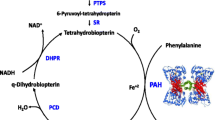Summary
Experiments in which the absorption of obidoxime was measured in situ in isolated loops of rat intestine as well as blood level determination of the antidote after feeding it to non-anesthetized rats demonstrated that obidoxime is absorbed with considerable difficulty from the gastrointestinal tract. The disodium salt of ethylendiaminetetraacetic acid (Na2 EDTA) proved to be the most effective of the various adjuvants of absorption tested: Na2 EDTA raised the blood level of obidoxime by 50%.
The absorption of obidoxmie takes place in the small intestine and not in the stomach.
Measurable blood levels of obidoxime could not be obtained in either dogs (with one exception) or 3 human volunteers after oral administration of tablets containing both obidoxime and Na2 EDTA and having a stomach resistent coating.
The absorption of obidoxime from the gastrointestinal tract of rats and dogs is markedly enhanced by cholinesterase inhibiting organophosphates and by pretreatment with the parasympathomimetic agent carbacholum.
Zusammenfassung
Resorptionsversuche mit Obidoxim (Toxogonin®) an abgebundenen armschlingen der Ratte in situ sowie Bestimmungen der Blutkonzentration des Antidots nach Fütterung an nichtbetäubten Ratten zeigen, daß Obidoxim nur sehr schwer aus dem Magen-Darmtrakt resorbiert wird. Bei der Prüfung verschiedener Adjuvantien zur Resorptionsförderung erwies sich das Dinatriumsalz der Äthylendiamintetraessigsäure (Na2-EDTA) am wirksamsten: Na2-EDTA erhöht den Blutspiegel von Obidoxim um 50%.
Die Resorption von Obidoxim findet nicht im Magen, sondern im Dünndarm statt.
Dragées mit magenresistenter Decke, die sowohl Obidoxim als auch Na2-EDTA enthielten, führten weder an Hunden (mit einer Ausnahme) noch an 3 freiwilligen Versuchspersonen zu einem meßbaren Blutspiegel von Obidoxim.
Die Vergiftung mit cholinesterasehemmenden Alkylphosphaten oder die Vorbehandlung mit dem Parasympathomimeticum Carbachol fördert die gastroenterale Resorption von Obidoxim an Ratten und Hunden in erheblichem Ausmaß.
Similar content being viewed by others
Literatur
Ammon, R.: Die fermentative Spaltung des Acetylcholins. Pflügers Arch. ges. Physiol.233, 486 (1934).
Erdmann, W. D., I. Bosse u.P. Franke: Zur Resorption und Ausscheidung von Toxogonin nach intramuskulärer Injektion am Menschen. Dtsch. med. Wschr.90, 1436 (1965).
—, u.H. Engelhard: Pharmakologisch-toxikologische Untersuchungen mit dem Dichlorid des Bis[4-hydroxyiminomethyl-pyridinium-(1)-methyl]-äthers, einem neuen Esterase-Reaktivator. Arzneimittel-Forsch.14, 5 (1964).
Levine, R. M., M. R. Blair, andB. B. Clark: Factors influencing the intestinal absorption of certain monoquaternary anticholinergic compounds with special reference to benzomethamine [N-diethyl-aminoethyl-N′-methyl-benzilamide methobromide (MC-3199)]. J. Pharmacol, exp. Ther.114, 78 (1955).
Levine, R. R., andG. M. Steinberg: Intestinal absorption of pralidoxime and other aldoximes. Nature (Lond.)209, 269 (1966).
Schanker, L. S., andJ. M. Johnson: Increased intestinal absorption of foreign organic compounds in the presence of ethylenediaminetetra-acetic acid (EDTA). Biochem. Pharmacol.8, 421 (1961).
Sundwall, A., andC. E. Elvin: Absorption studies on N-methyrpyridinium-2-aldoxime methanesulphonate (P2S) in dog and man. Acta physiol. scand., Suppl.50, 146 (1960).
Tidball, C. S., andR. I. Lipman: Enhancement of jejunal absorption of heparinoid by sodium ethylenediaminetetraacetate in the dog. Proc. Soc. exp. Biol. (N.Y.)111, 713 (1962).
Vogt, W.: Resorption von Pharmaka durch Diffusion. Naunyn-Schmiedebergs Arch. exp. Path. Pharmak.250, 210 (1965).
Wirth, W., G. Hecht u.Ch. Gloxhuber: EDTA-Therapie. Toxikologie-Fibel. Stuttgart: Georg Thieme 1967.
Author information
Authors and Affiliations
Additional information
Unserem verehrten Lehrer, Herrn Professor Dr. med.Ludwig Lendle, in Dankbarkeit zum 70. Geburtstag gewidmet.
Rights and permissions
About this article
Cite this article
Erdmann, W.D., Okonek, S. Über die gastroenterale Resorption des Esterasereaktivators Obidoxim und die Möglichkeiten einer Resorptionsförderung. Arch. Toxikol. 24, 91–101 (1969). https://doi.org/10.1007/BF00577817
Received:
Issue Date:
DOI: https://doi.org/10.1007/BF00577817




